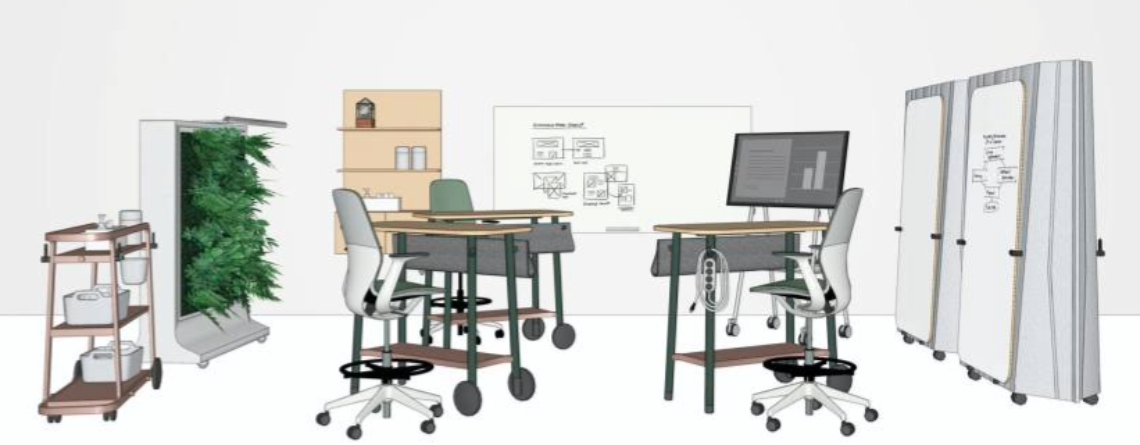“Designers have a responsibility to share solutions with the world.” –Massimo Iosa Ghini, architect
Office design has trended toward open concept over the past decade, and in post-COVID times, furniture trends are responding with designs that are redefining how we work.
Trends
- Desk-sharing or “hot-desking” has gained traction in recent years as a way for employers to give greater flexibility to their workers and be more economical with physical space. And while conventional wisdom may dictate that this trend will be a thing of the past post-COVID, many companies are embracing this dynamic and taking it a step further.

- Office or desk “hoteling” allows employees to reserve a work space, and allows workers to collaborate in shared spaces. Desk-sharing gives more autonomy for employees to work from home or in the office, reducing the number of people in the office at any given time. Shared desks do not collect personal items and can therefore be cleaned and disinfected more easily, and after each use.
- Free-standing and mobile multifunctional furniture allows workers to reconfigure a space on command. Desks can be placed in more traditional layout, or clustered together for collaboration. For workers who like to stand, height-adjustable desks continue to be popular.

- Furniture with integrated technology allows for ease of communication. Desks and chairs equipped with phone chargers and conference tables with integrated screens and data ports increases connectivity.

- As people are getting more comfortable going back to the office after working from home, companies are responding with creating a more home-like atmosphere. Arm chairs and sofas, padded seats, stylized lighting and climate and light-control all add to the comfort that is reminiscent of home.

- Shift toward sustainability. Most furniture companies have a prominent sustainability statement, not only for their products, but for their own office and manufacturing facilities. Materials that mimic nature such as wood and laminates, as well as bamboo and seagrass are popular choices, as are eco-friendly fabrics made of natural fibers and recycled materials.
- Need for cleanable and “healthy” surfaces. Fabrics that are bleach-cleanable and surfaces that are hygienic and able to withstand frequent disinfection. and non-porous materials that reduce or repel microbes.
- Many offices will retrofit their existing layouts with added barriers such shields, acrylic panels and curtains, as well as increase distance between work spaces.

About Tran + Thomas
Built on the foundation of a 30-year, family-owned Interior Design business, Jill Tran and Carmen Thomas opened Tran + Thomas Design Studio in 2011 bringing a combined 36 years of experience to their projects. They work on both residential and commercial projects across several styles. Interested in their services? Call (913) 268-9595 or schedule a consultation below.
